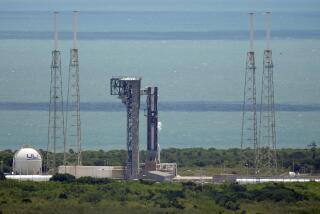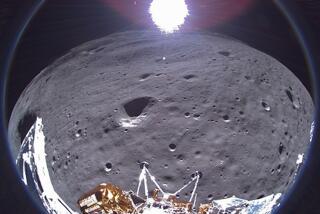Skylab’s Fall to Earth Taught Lessons for Mir Reentry
SPACE CENTER, Houston — Of all the lessons from Skylab, America’s first space station launched 25 years ago, perhaps the most important came at the fiery end.
That lesson is this: Plan, plan, plan for the inevitable day a space station comes tumbling down.
“We don’t want to drop it on people’s heads, that’s for sure,” said NASA’s Jack Bacon, who’s working on the first piece of the international space station while planning for Mir’s 1999 demise.
Skylab was home to three crews from May 25, 1973, to Feb. 8, 1974. It was launched in one piece on May 14, 1973, by a Saturn 5 rocket, the kind used to send men to the moon. The station lacked a booster engine to raise its orbit; NASA could not afford one.
With the space shuttle scheduled to begin flying in 1978, NASA figured that shuttle astronauts could attach a booster engine to Skylab during a spacewalk. The engine, in turn, could raise Skylab to a safe orbit and allow the station to once more serve as a science lab.
But shuttle development dragged on years longer than planned, and NASA had no choice but to give up any rescue effort.
“It was clear early on that we weren’t going to get to it in time, that all we could do was watch,” Bacon said.
Aside from some minor steering by ground controllers, that’s pretty much what NASA and the rest of the world did--watch and worry--when Skylab plunged through the atmosphere on July 11, 1979.
The exact day of reentry was forecast only two days in advance, and the exact hour only hours before. Final projections were off by several minutes, and NASA’s forecast of an Indian Ocean splashdown wasn’t entirely correct. Debris landed not only in the Indian Ocean but in western Australia. No one was hurt, and nothing was damaged.
At the time, the 78-ton Skylab--a cylinder 118 feet long and 22 feet in diameter--was the largest object ever launched into orbit.
Russia’s Mir, launched in segments beginning in 1986, weighs 120 tons and sprawls every which way with multiple modules, solar wings and antennas. The international space station will weigh nearly 500 tons when fully assembled in orbit. And it, too, one day will have to come down.
Mir almost certainly will break apart when it plunges through the atmosphere next year at age 13, seven years older than Skylab was when it fell. If all goes as planned, Mir will be guided in over an unpopulated stretch of the North Pacific by an attached Progress ship commanded by flight controllers.
More to Read
Sign up for Essential California
The most important California stories and recommendations in your inbox every morning.
You may occasionally receive promotional content from the Los Angeles Times.










